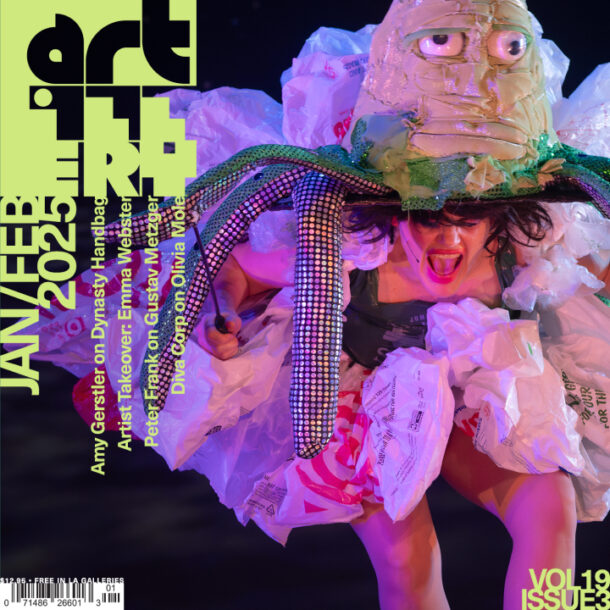Richard Hoblock’s recent paintings appear as peekaboo scrims offering tantalizing glimpses into abstruse corners of the artist’s mind. Each of 16 abstractions in the San Francisco-based painter’s show “View from the Cheap Seats” appears non-objective but specific in its approximation of a certain, but not necessarily specifiable, mood or metaphor. Each involves vibrant shapes of indefinite boundaries that variably mingle, mesh, blend, overlap and interlock without any obvious purpose or designation. Yet paradoxically, they don’t appear random; the shapes and forms appear to exist intentionally, occurring for reasons that one doesn’t understand, but doesn’t need to; for like molecular motion or cellular mutation, these images conform to their own fascinating logic; and like a mystified scientist peering through a microscope, one can only observe and try to assimilate whatever information one might absorb through looking.
Each painting’s palette is limited to a set of a few different main colors that clash in their purest form, while blending and echoing one another in more muted mixed hues and subtle transparencies. From afar, his variegated colors coalesce like Clyfford Still’s color fields, de Kooning’s abstractions, or even Braque’s Cubist scenes.
Hoblock’s paintings are suffused with a sense of all-over movement and serendipity similar to Abstract Expressionism, but without the hurried frenetic randomness associated with “action painting.” Counter to grandiose AbEx bravado, Hoblock’s mostly easel-sized paintings are refined, intimate and contemplative, with deliberate palette knife impastos conjuring a plethora of Bay Area figurative painters.
The palette and patchwork composition of OH NO SHE BETTER DON’T (2018), for instance, recalls de Kooning’s Police Gazette (1955) and Diebenkorn’s Berkeley #57 (1955). However, rather than suggesting landscapes like Diebenkorn and de Kooning’s abstractions, Hoblock’s latticed layouts suggest interstitial layers of connective tissue. In PERFECT STRANGER (2017), pink honeycomb covers a foggy grayish layer interwoven with a network of tiny lines obscuring a dark purple pattern. The layering evokes brain tissue and echoes the canvas’ warp and weft.
The ruminations behind Hoblock’s paintings are as quirkily multilayered as the paintings themselves. He conceived of this show’s title while thinking about Arthur Miller’s play A View From the Bridge as he sat in the audience of a performance of Edward Albee’s Three Tall Women.
A former filmmaker, Hoblock imbues his paintings with an experiential impression of time and motion. In gazing at each picture, one can sense the deliberation in his repetitive act of applying paint to canvas, scraping some away with a palette knife; applying some more, carving a little line here; taking a bit of paint off there. One discovers the tiniest of brush hairs, minuscule lacerations into luscious impasto, and oil spill iridescence in inky violet slathers.
Hoblock’s pictures seem intensely personal in their idiosyncratic vagaries. His unmistakable but peculiar allusions to previous painters evoke mishmashes of familiar historic paintings overlapping and disintegrating as fuzzily remembered mental images. In its art historical references and celebration of paint’s singular properties, Hoblock’s work self-reflexively suggests painting’s uniquely poignant way of processing experience, capturing the ephemeral and reifying the intangible.



